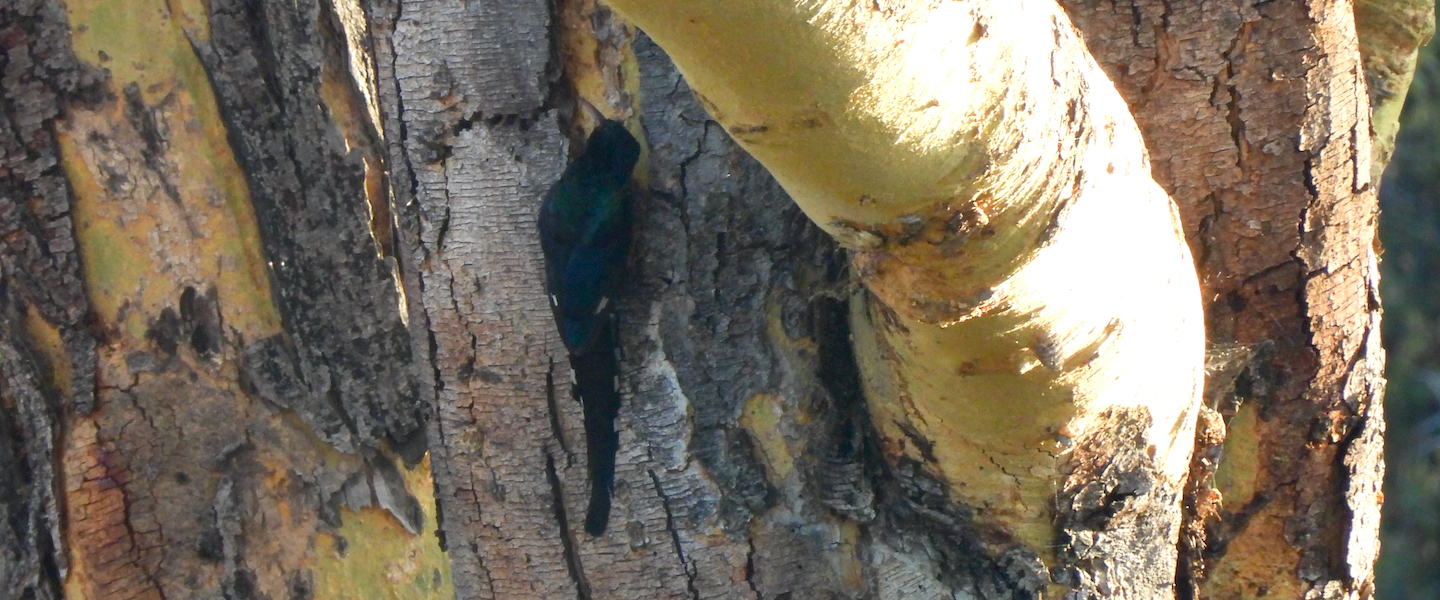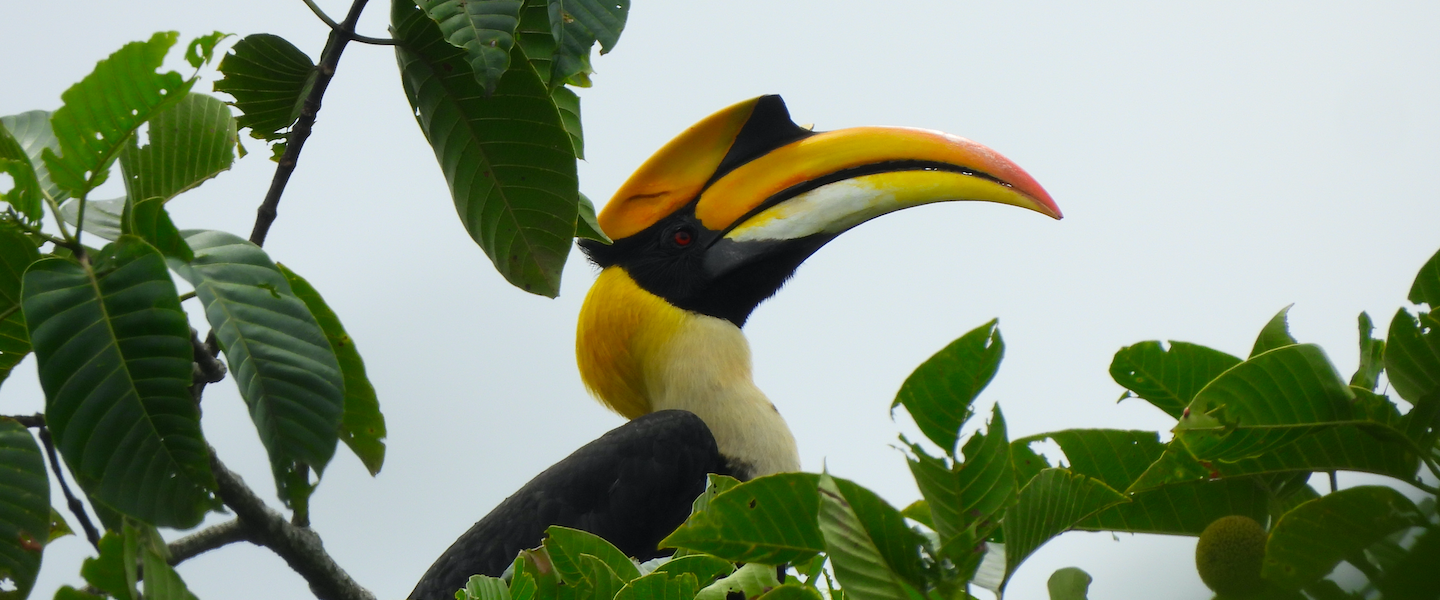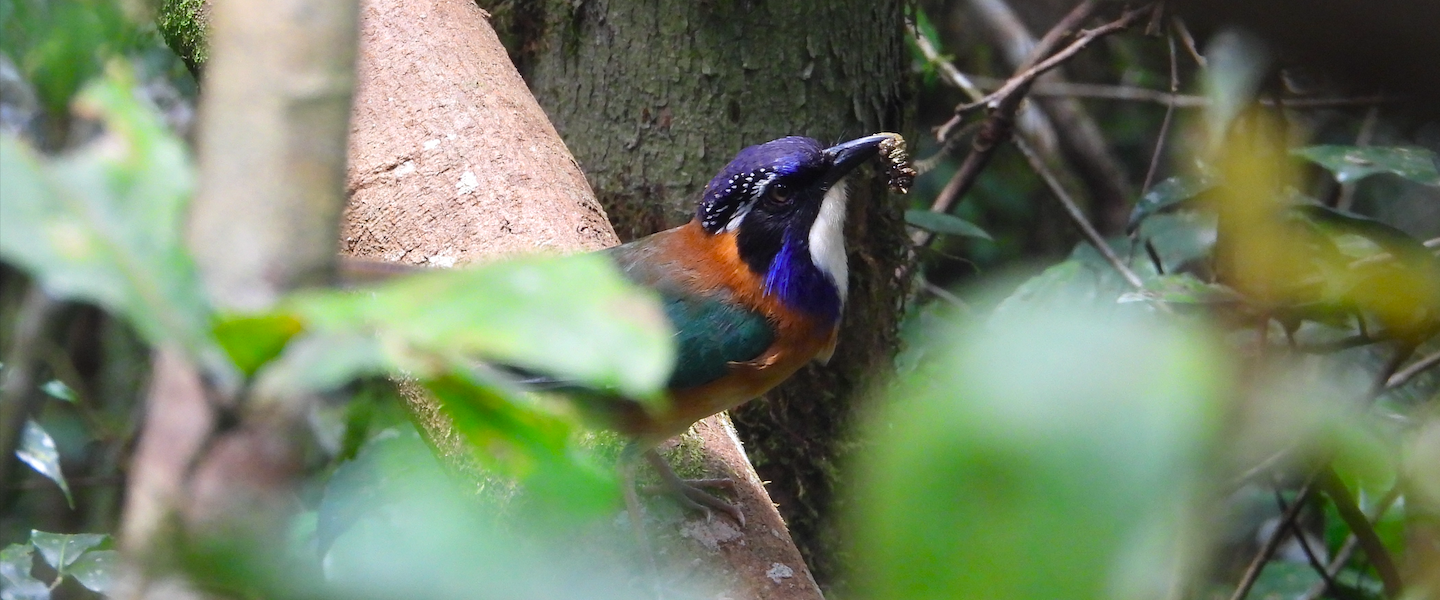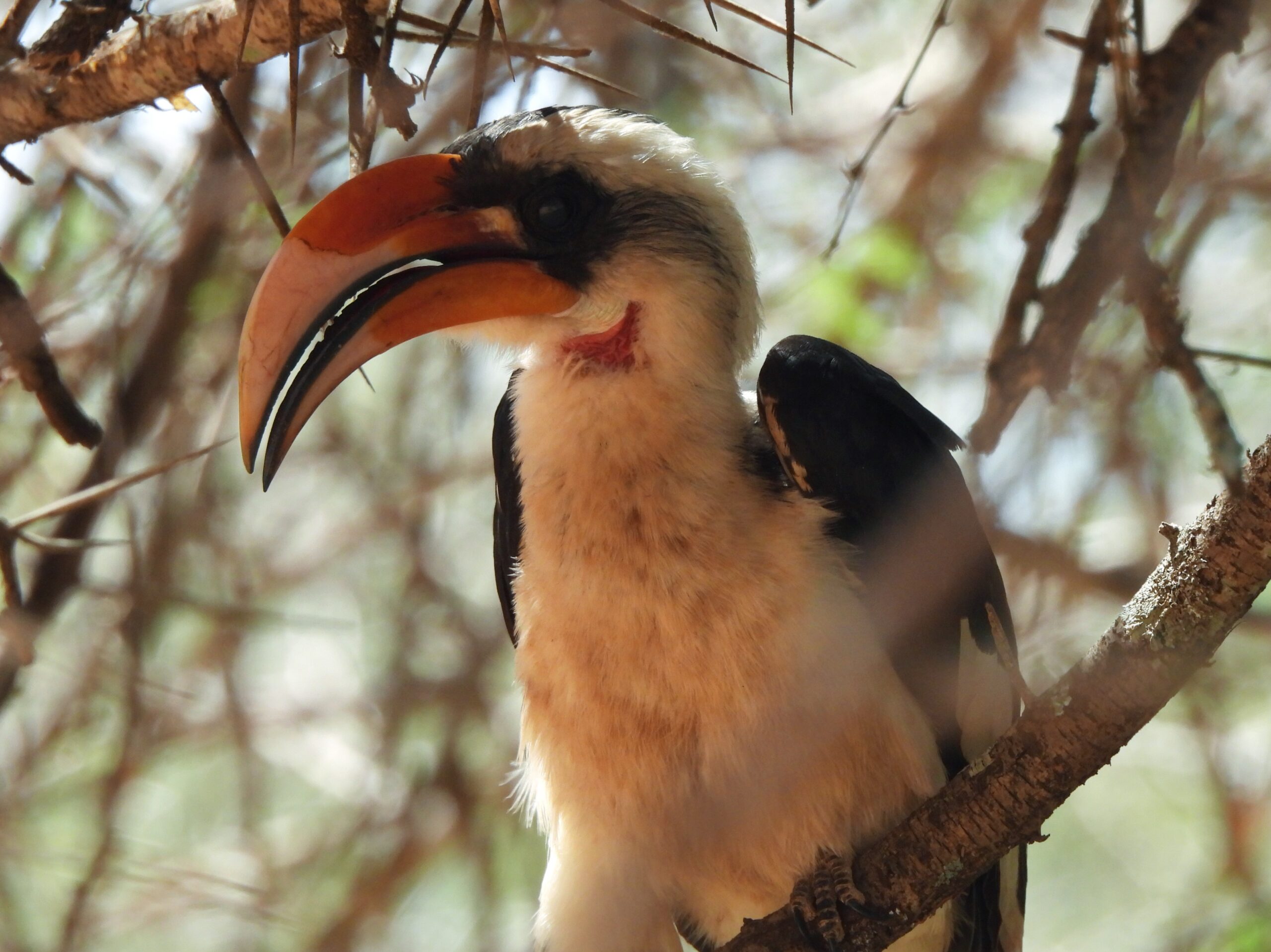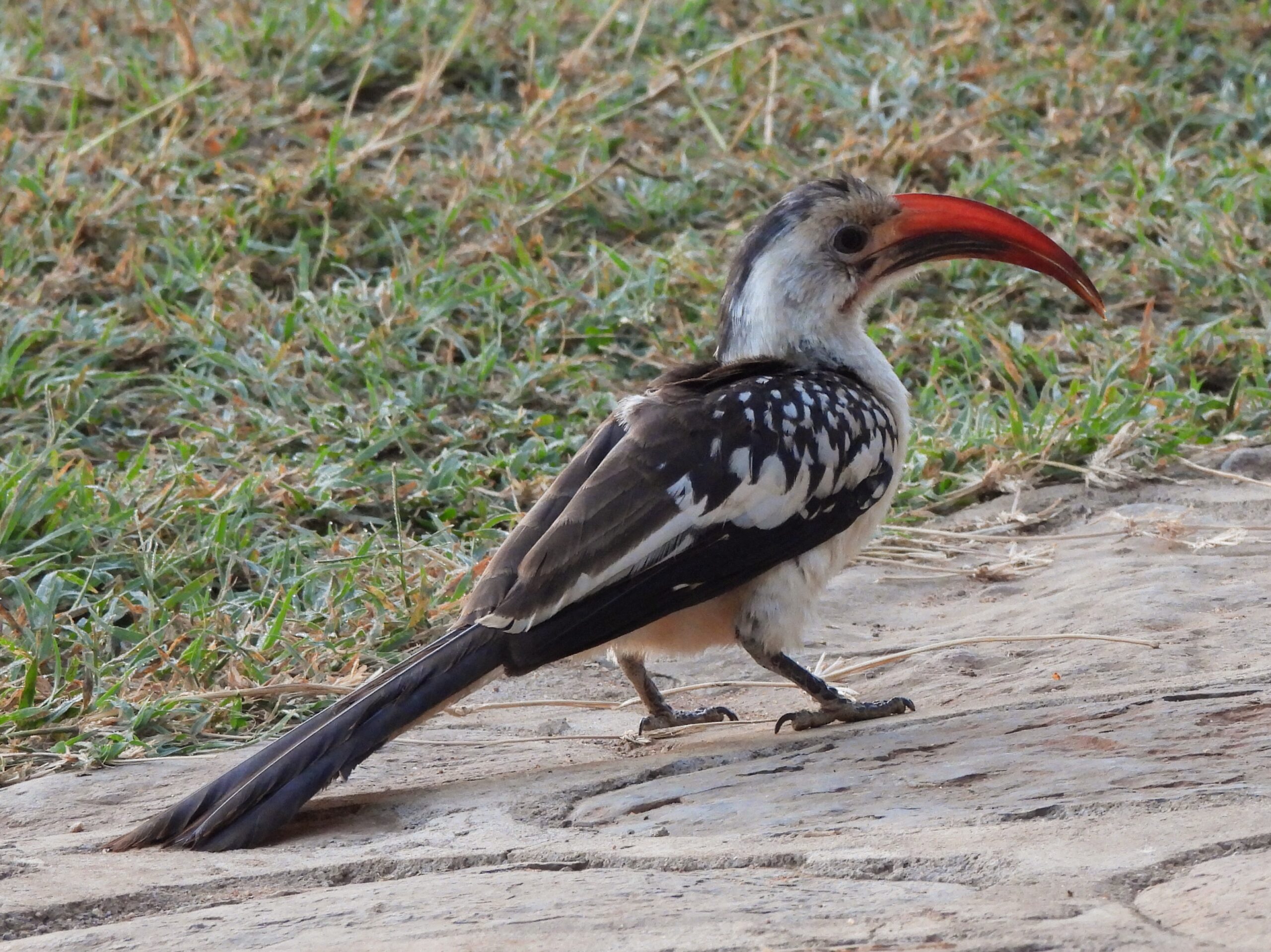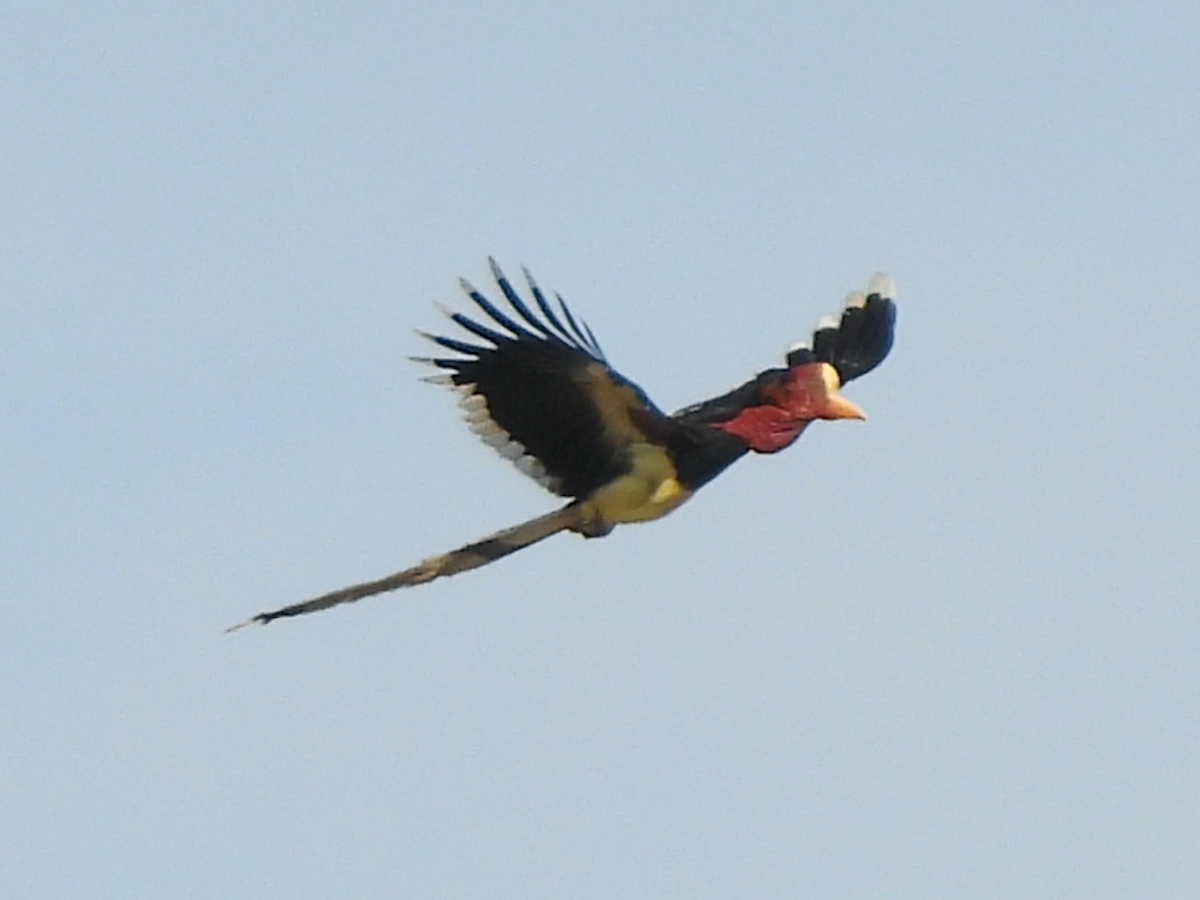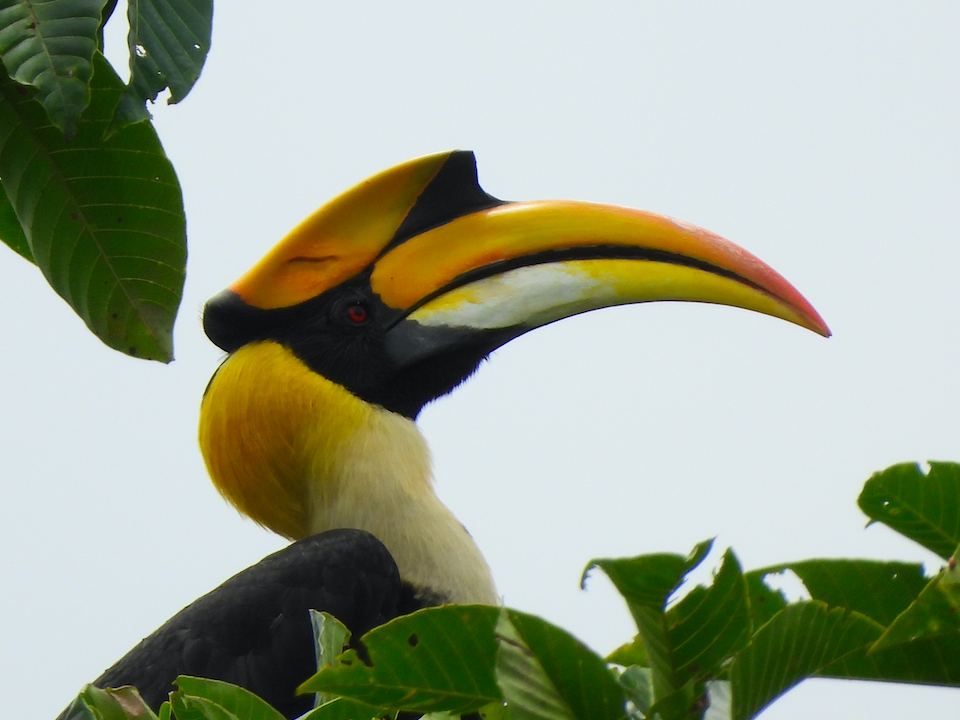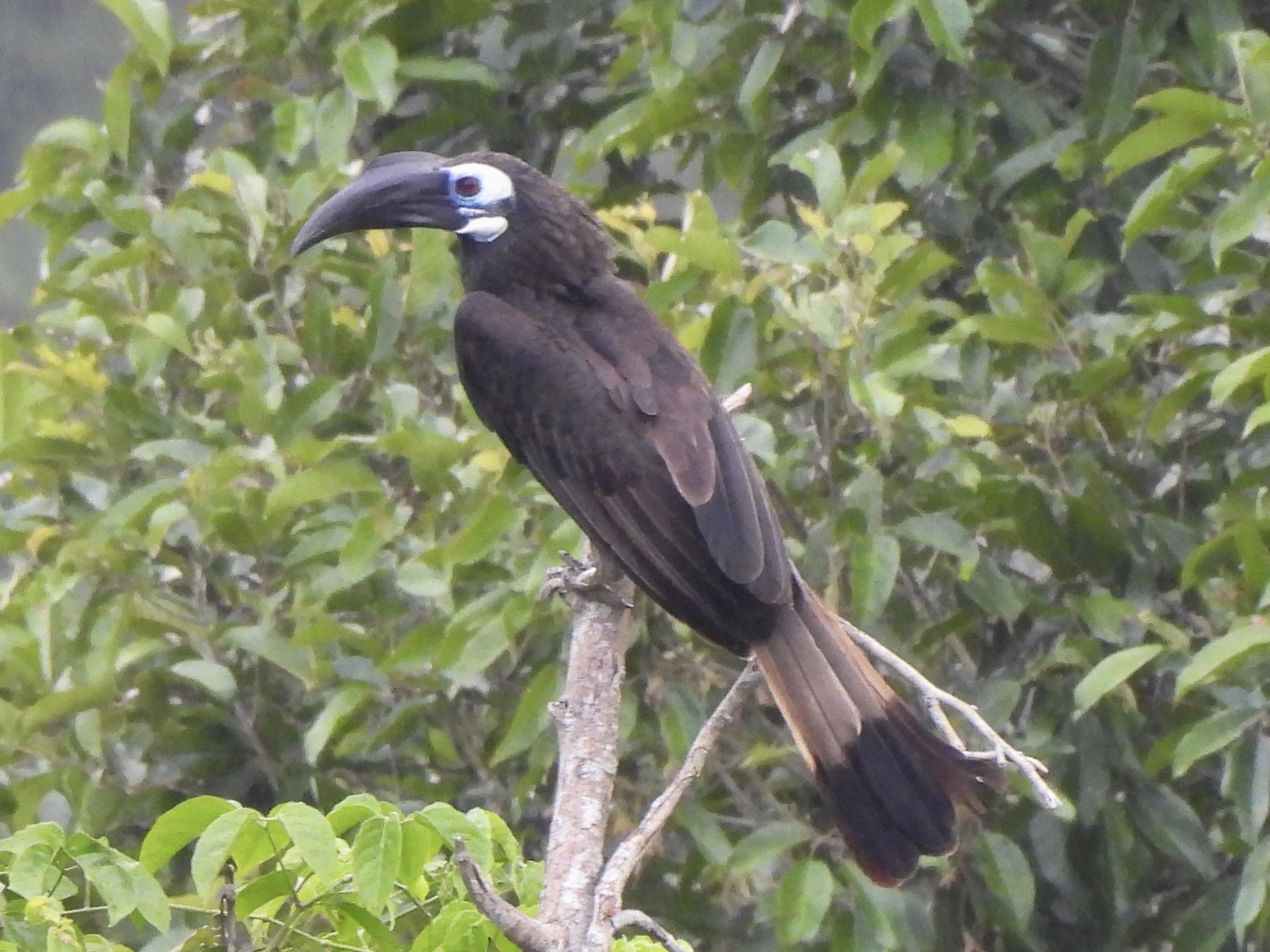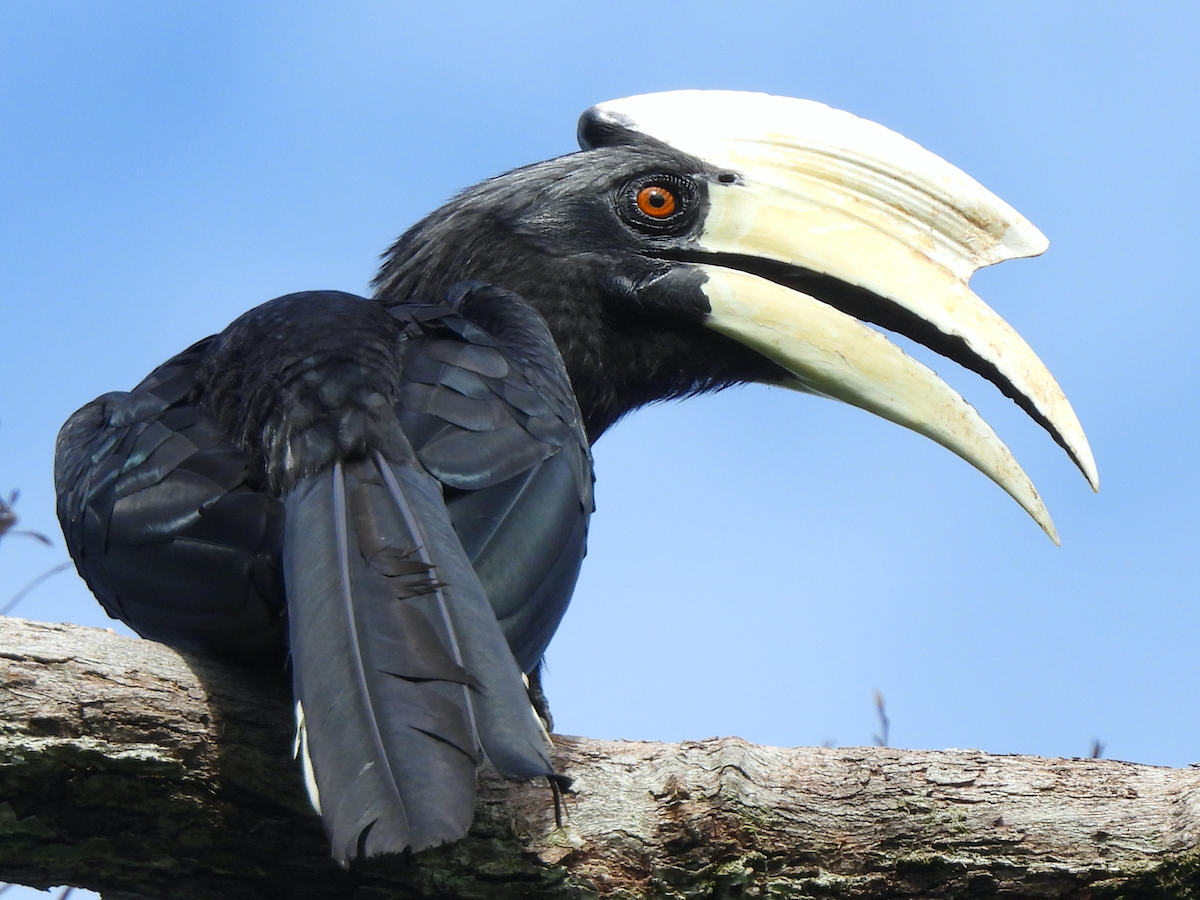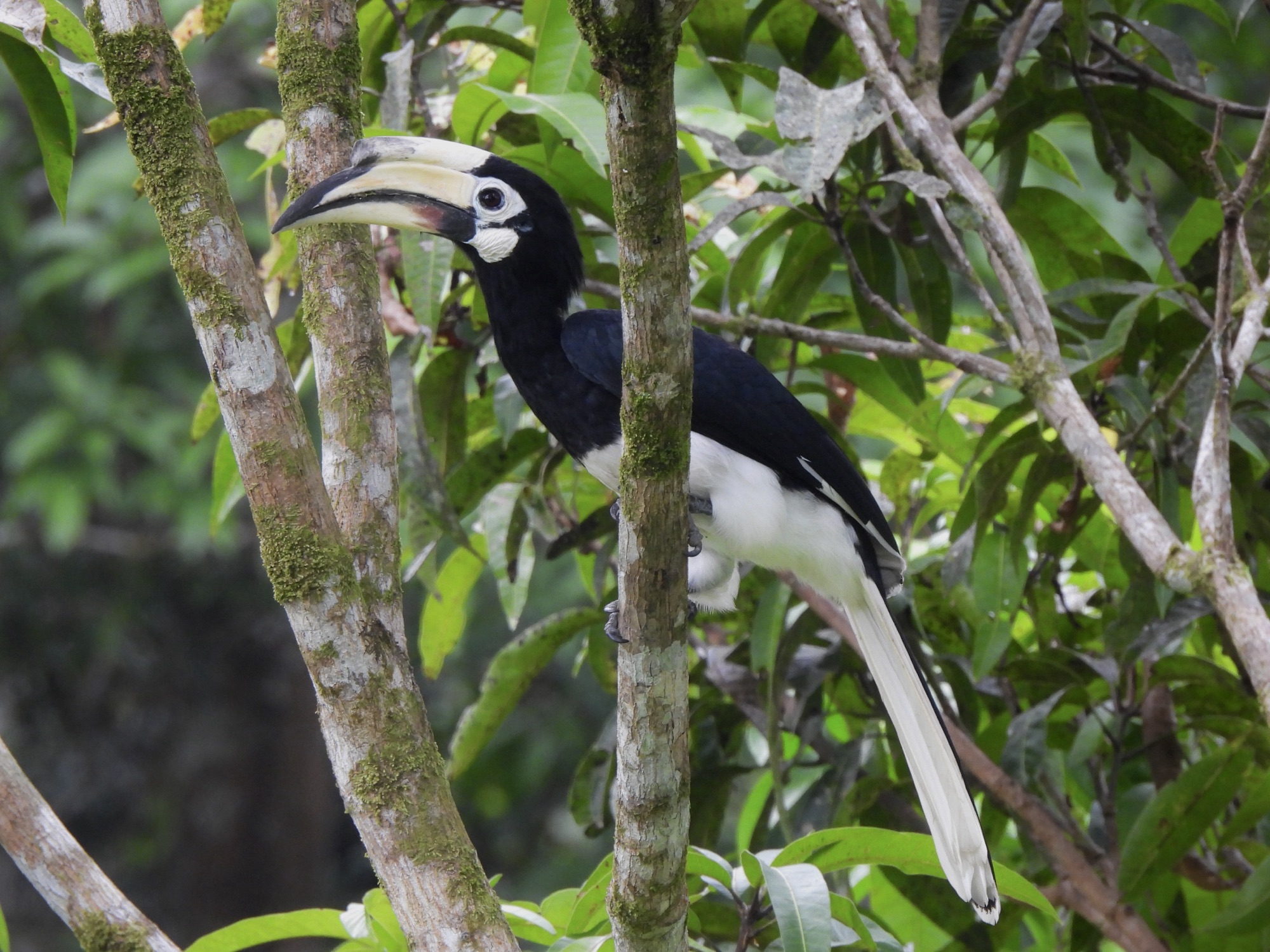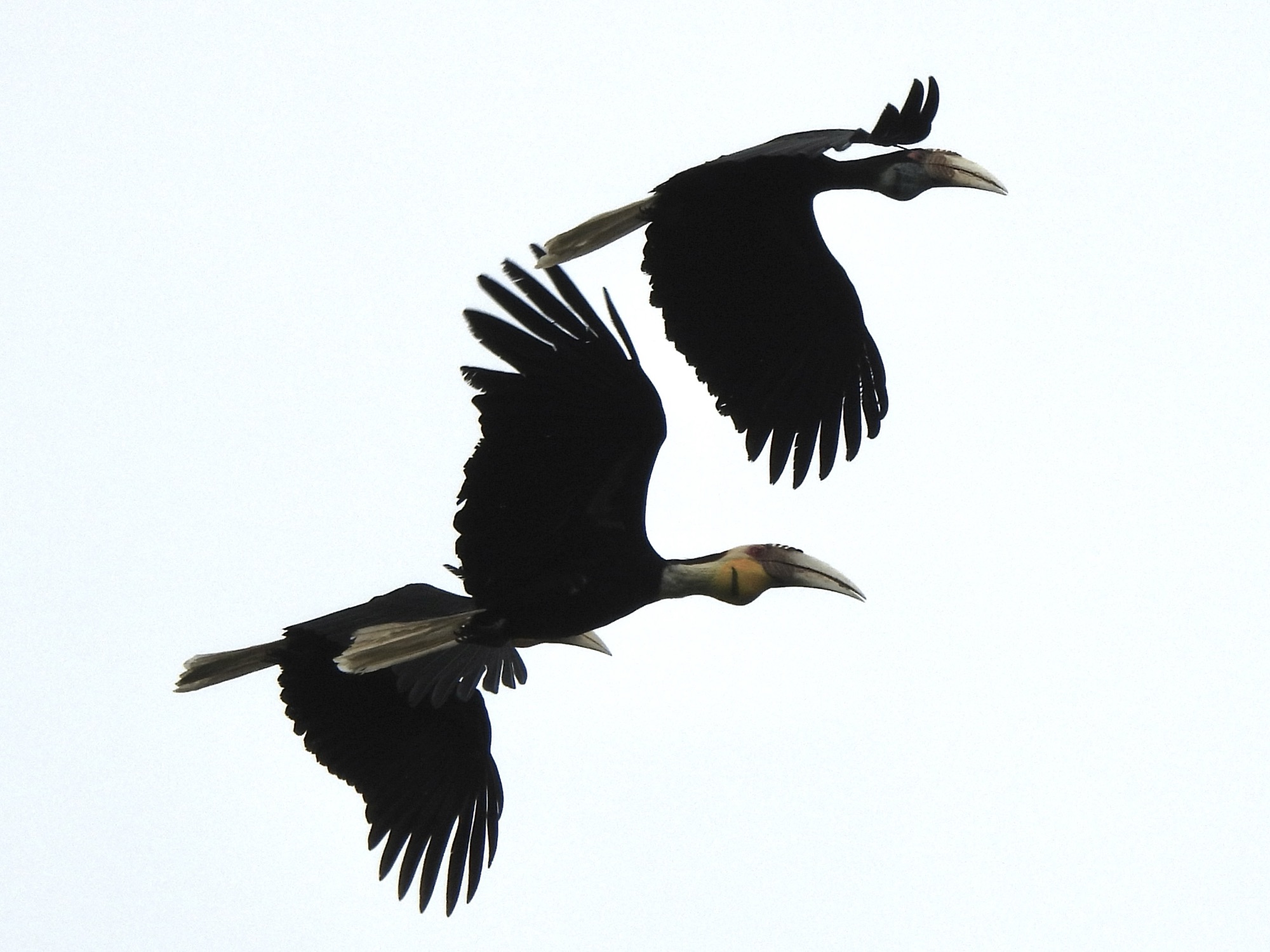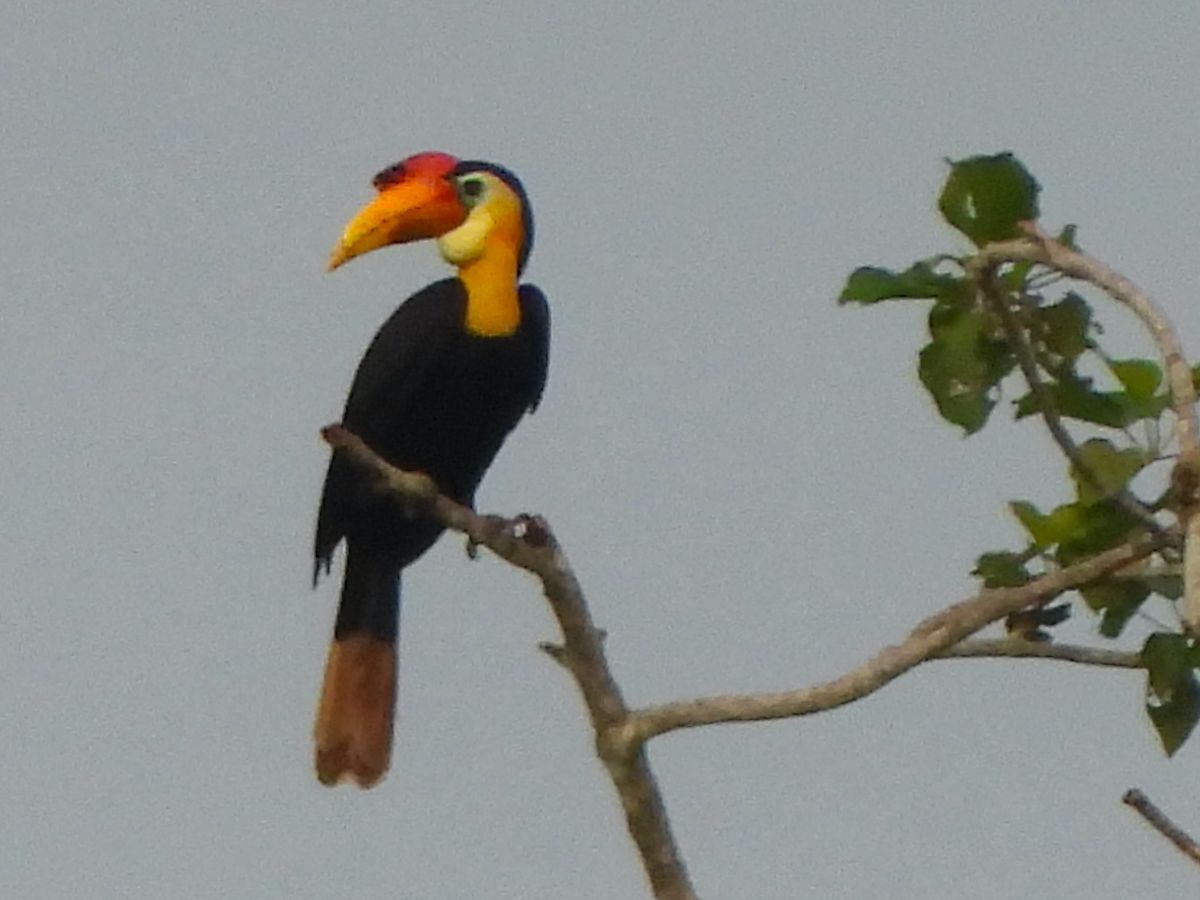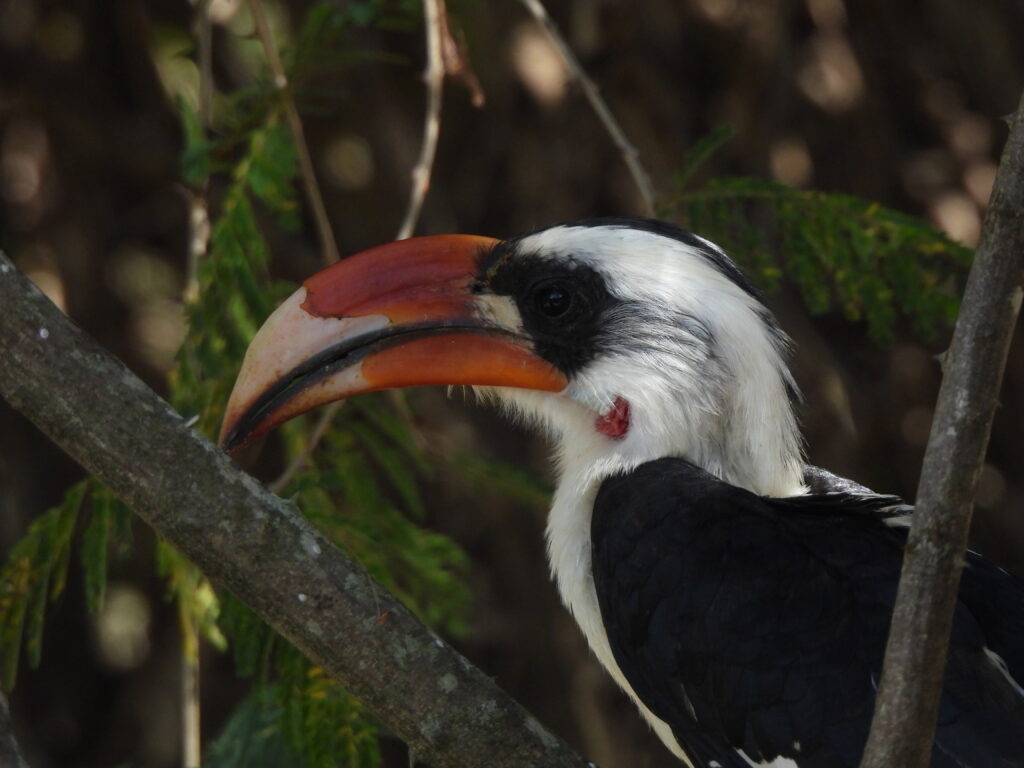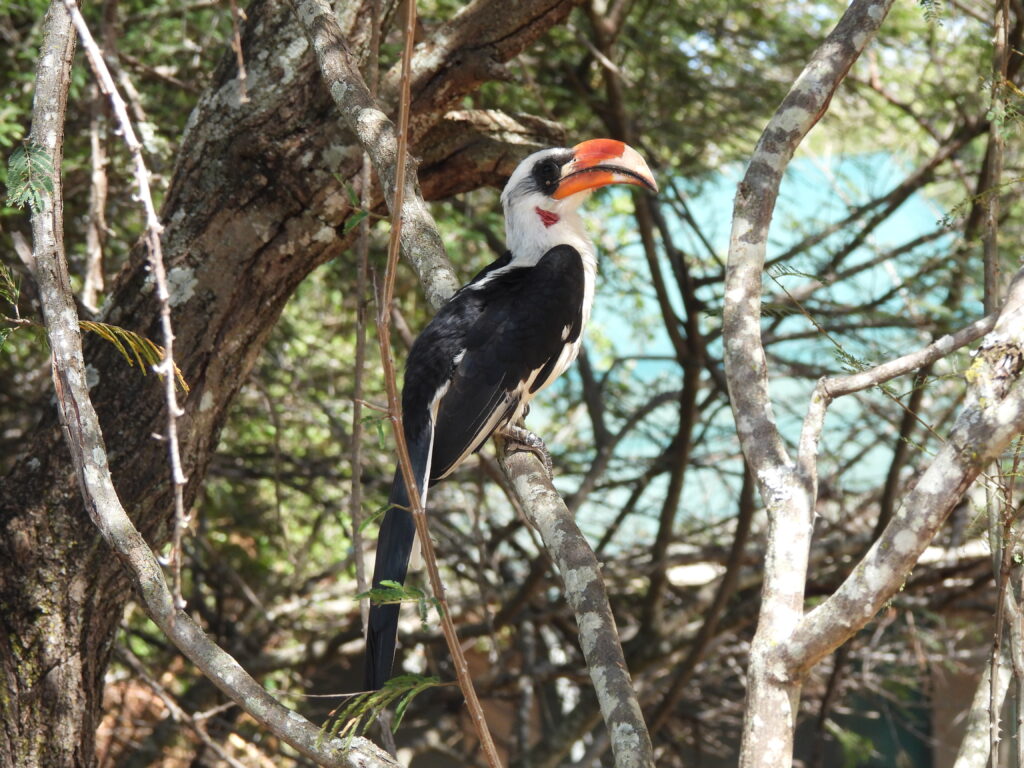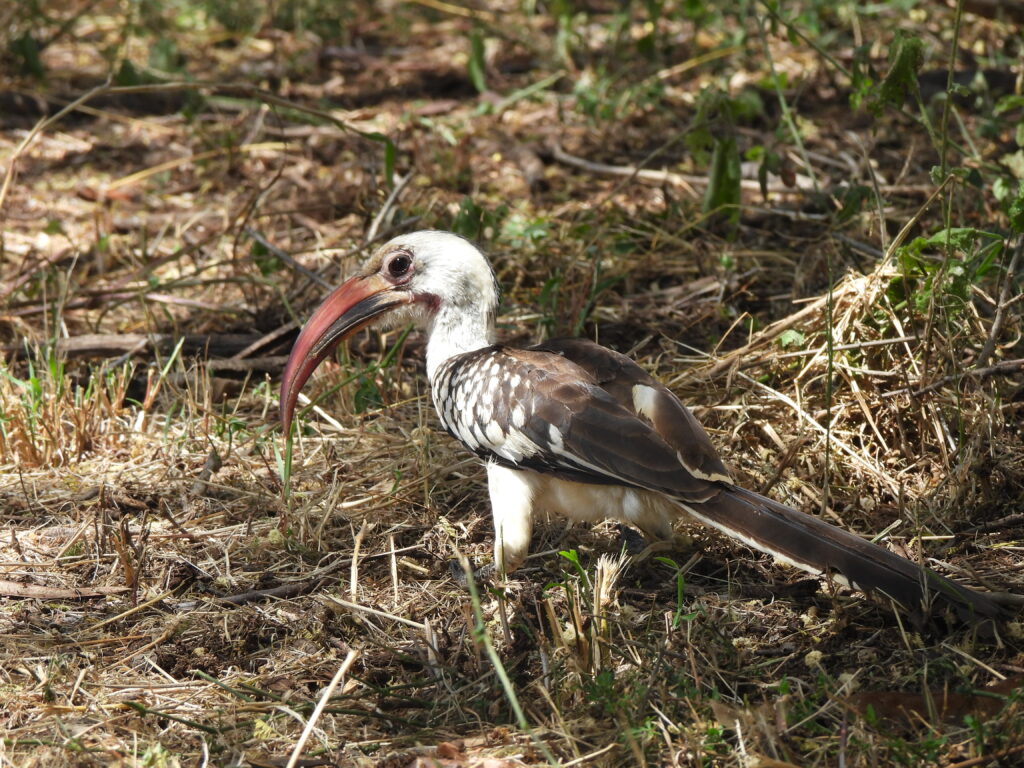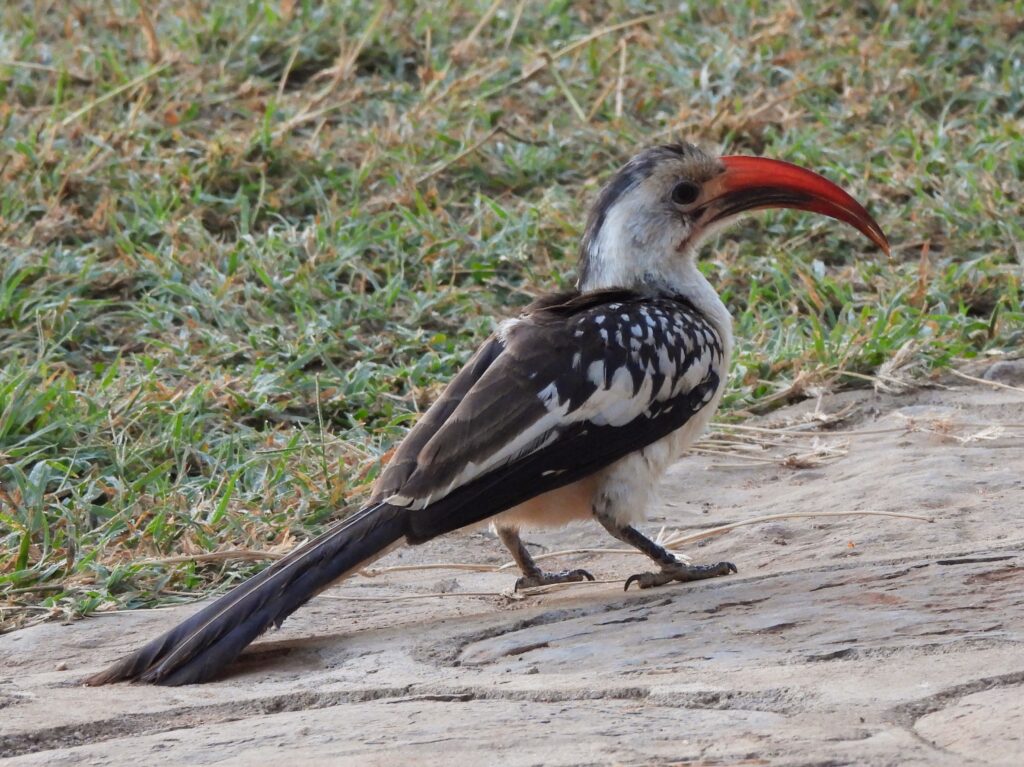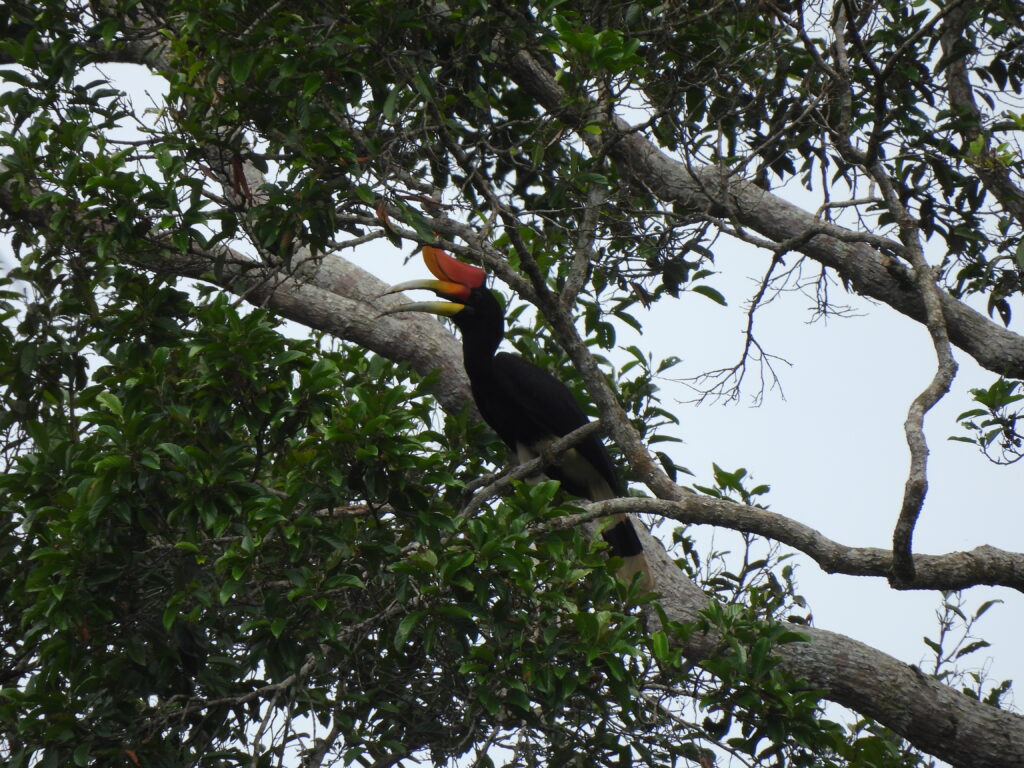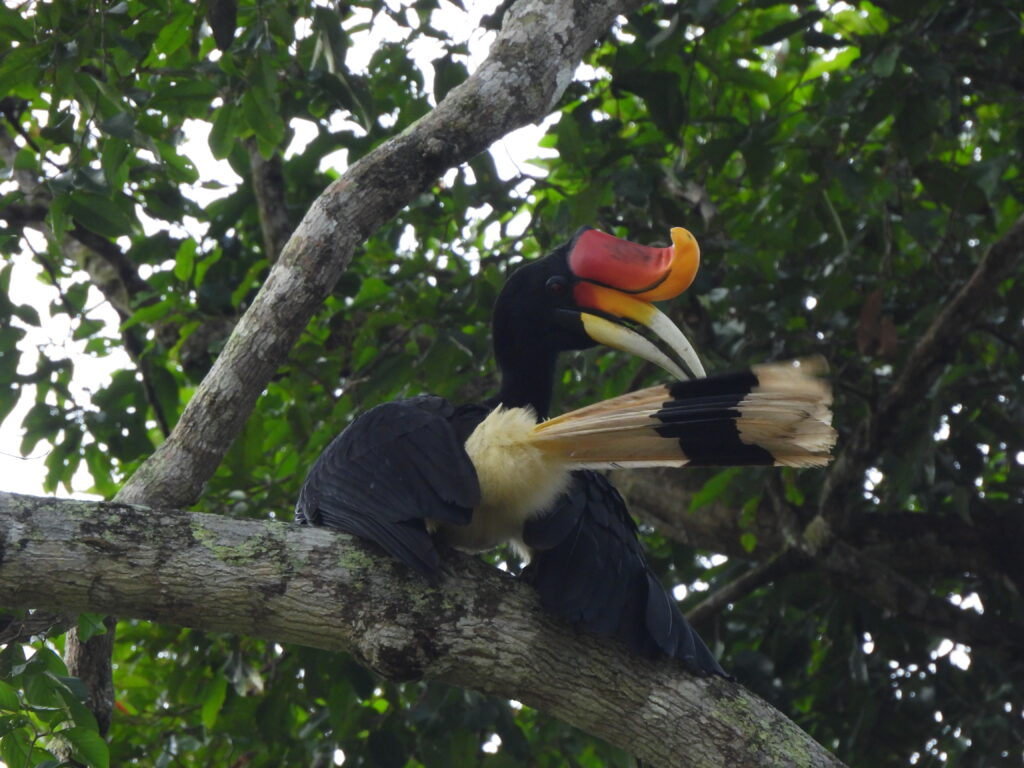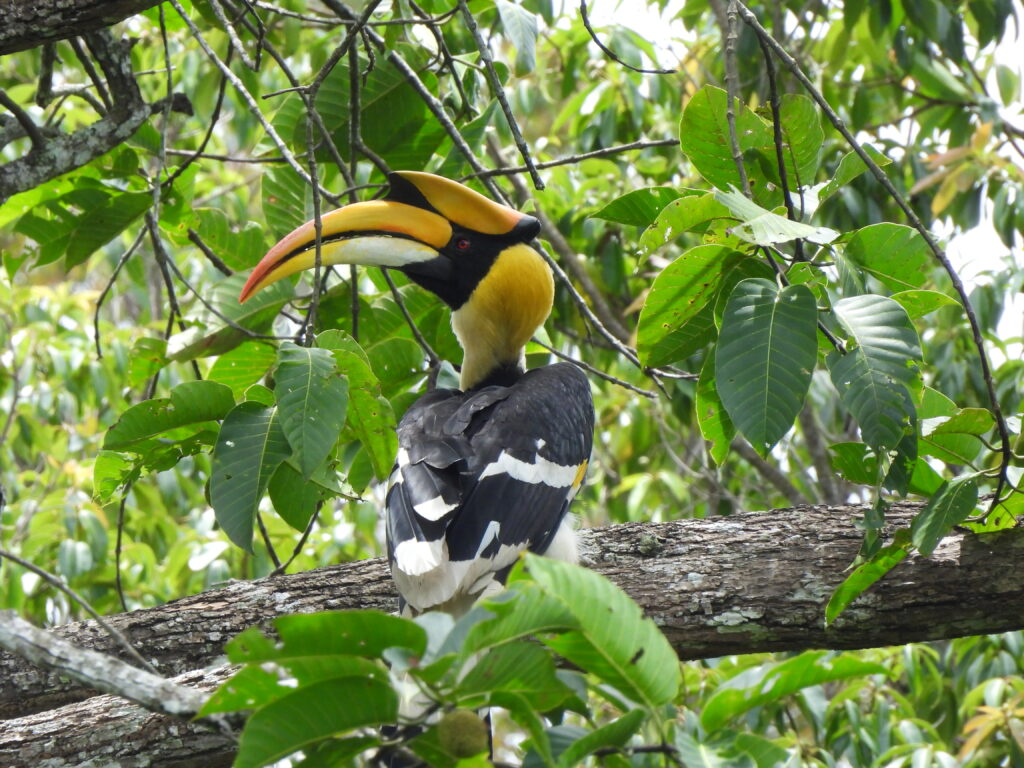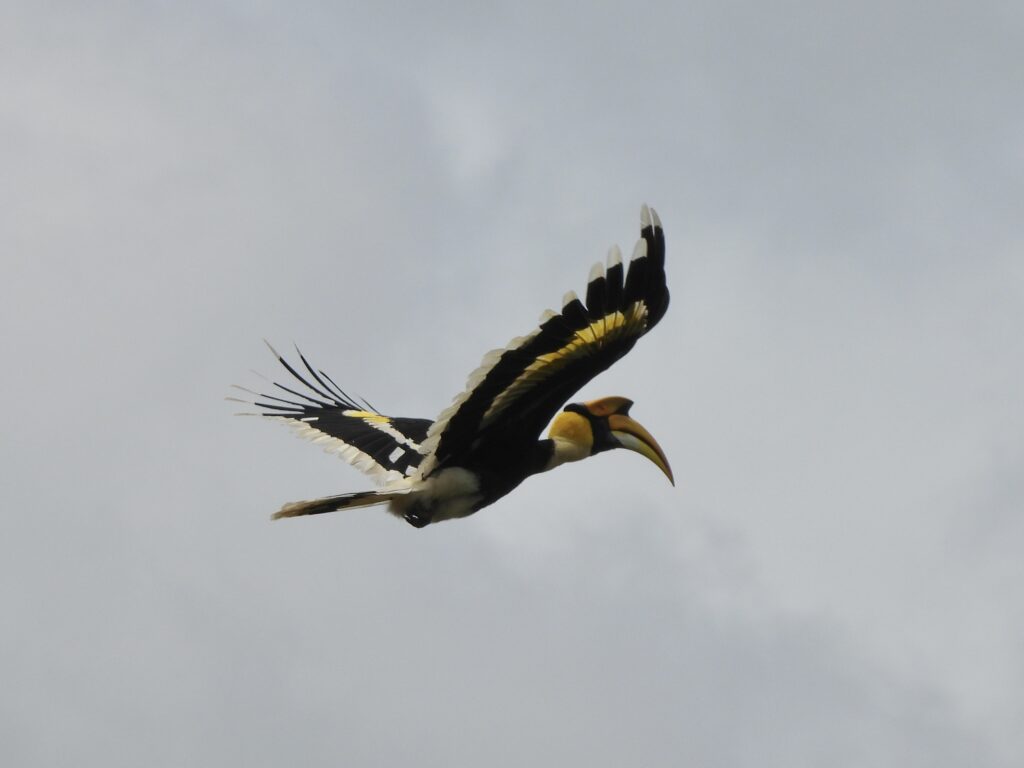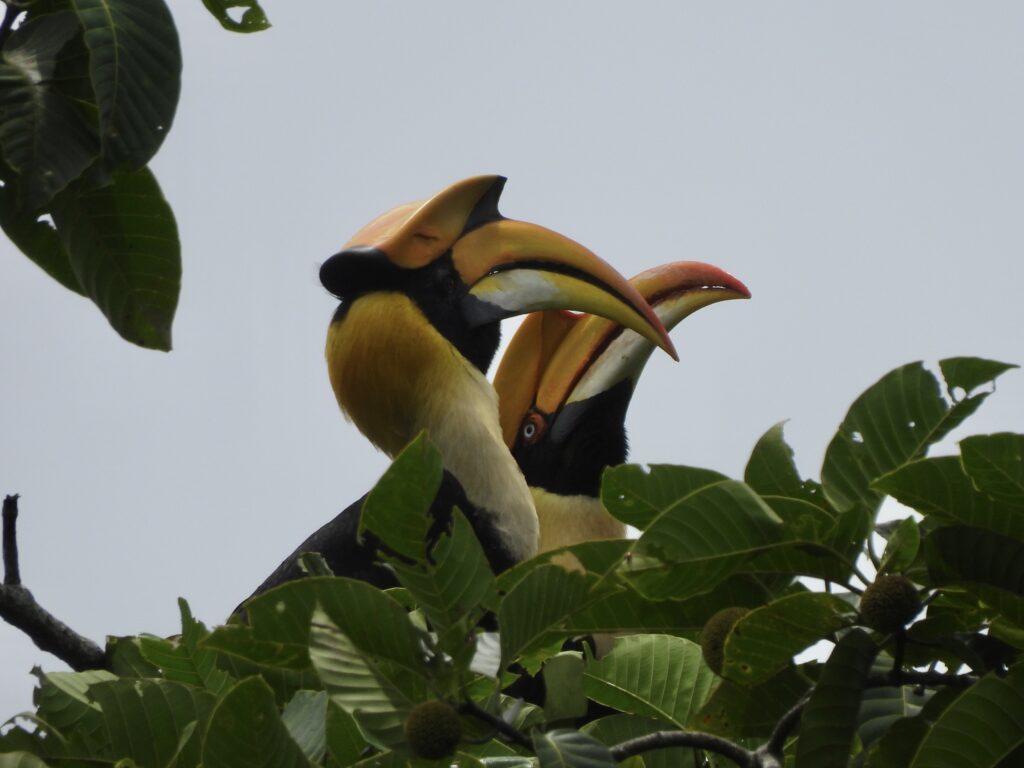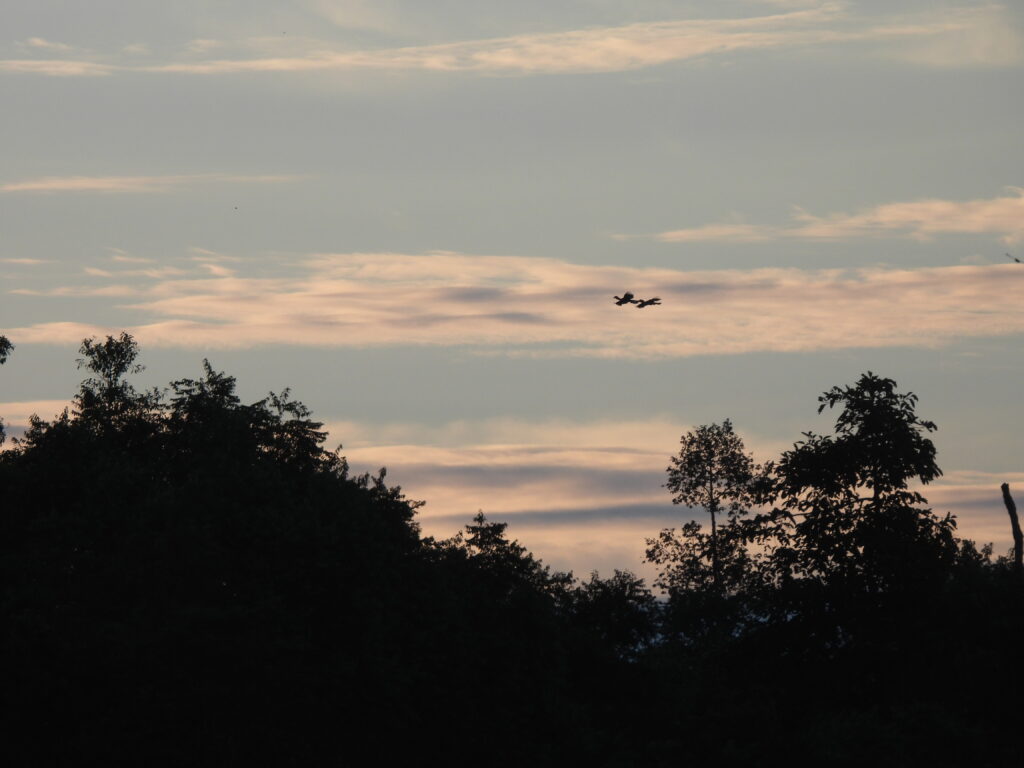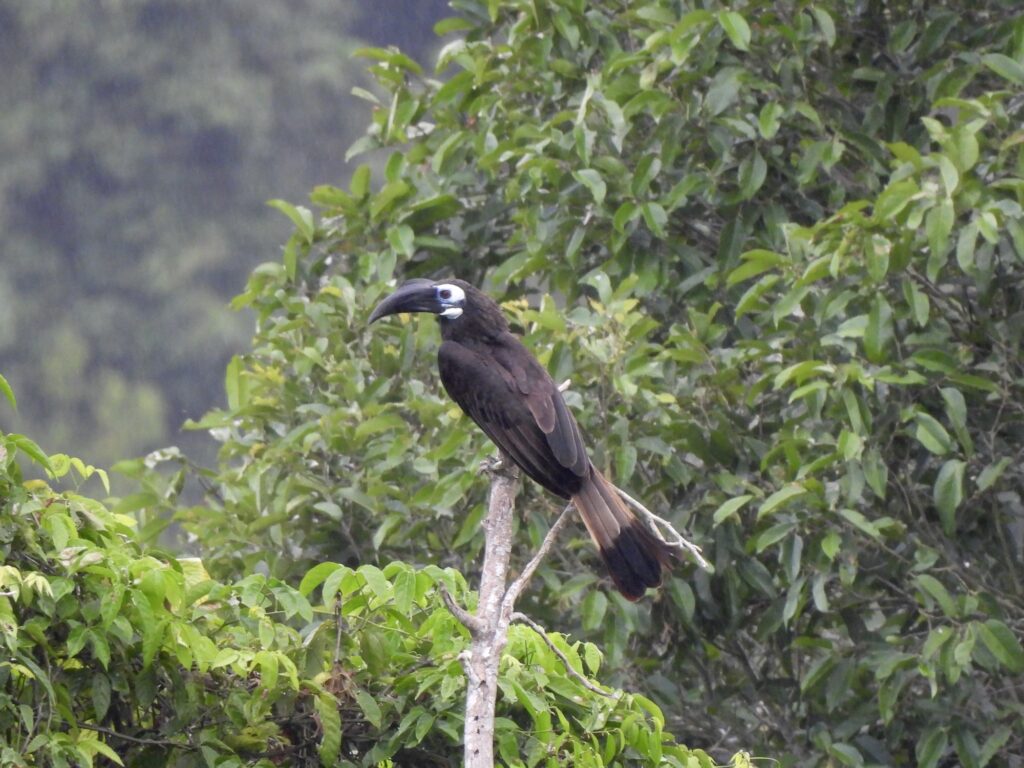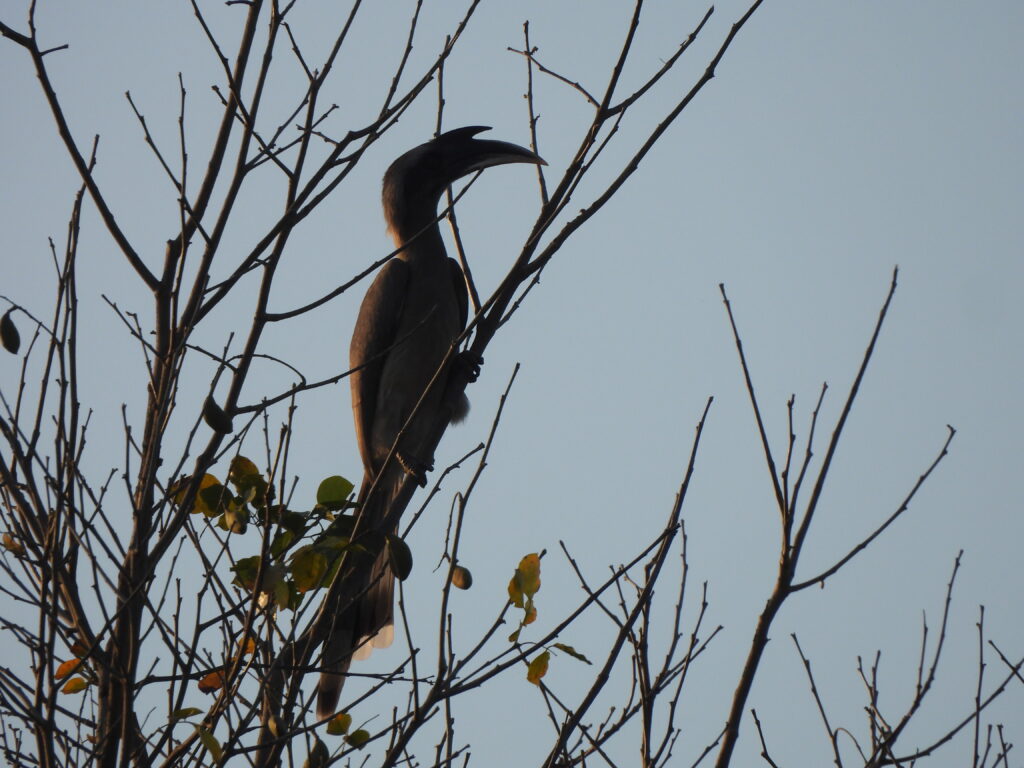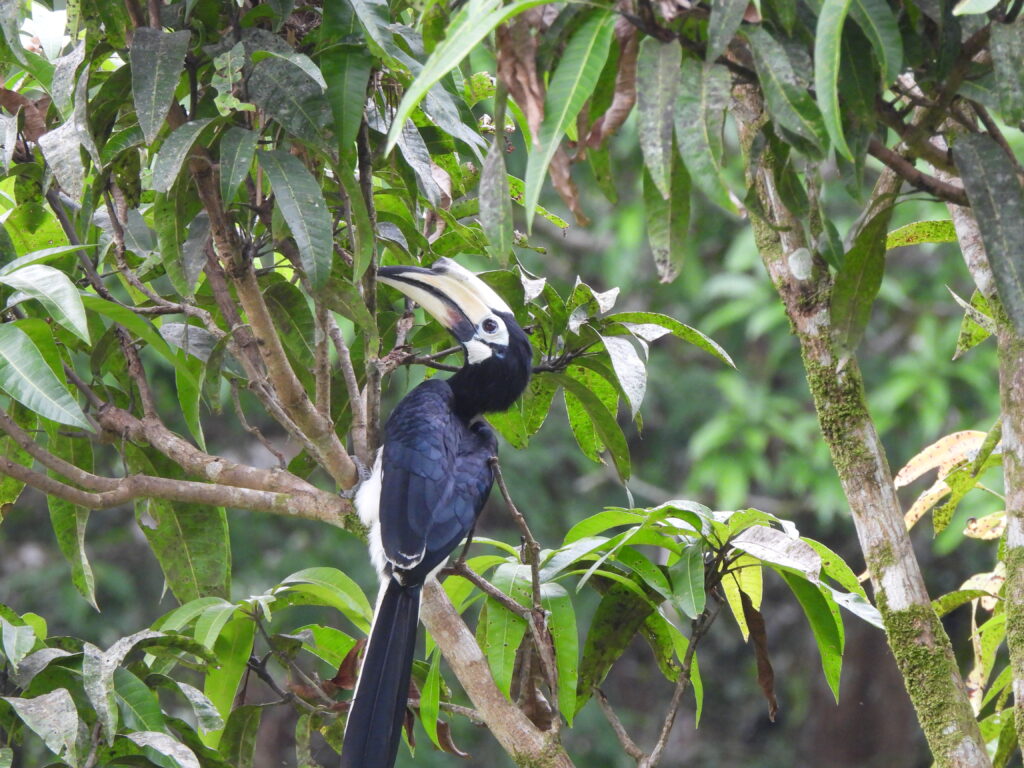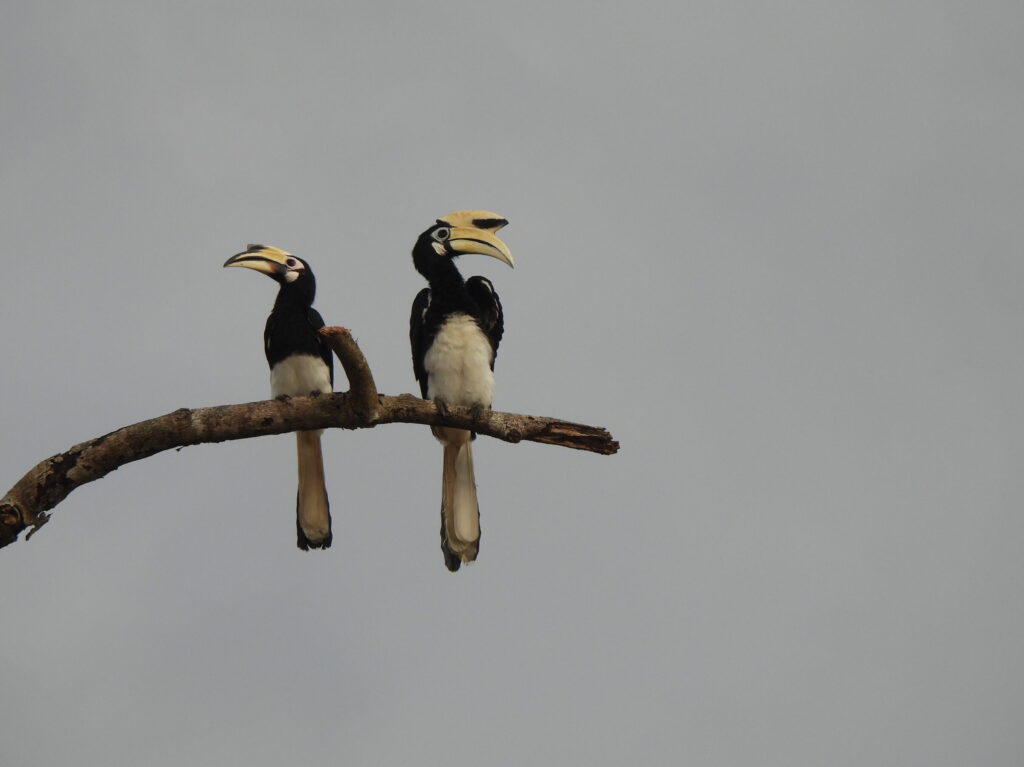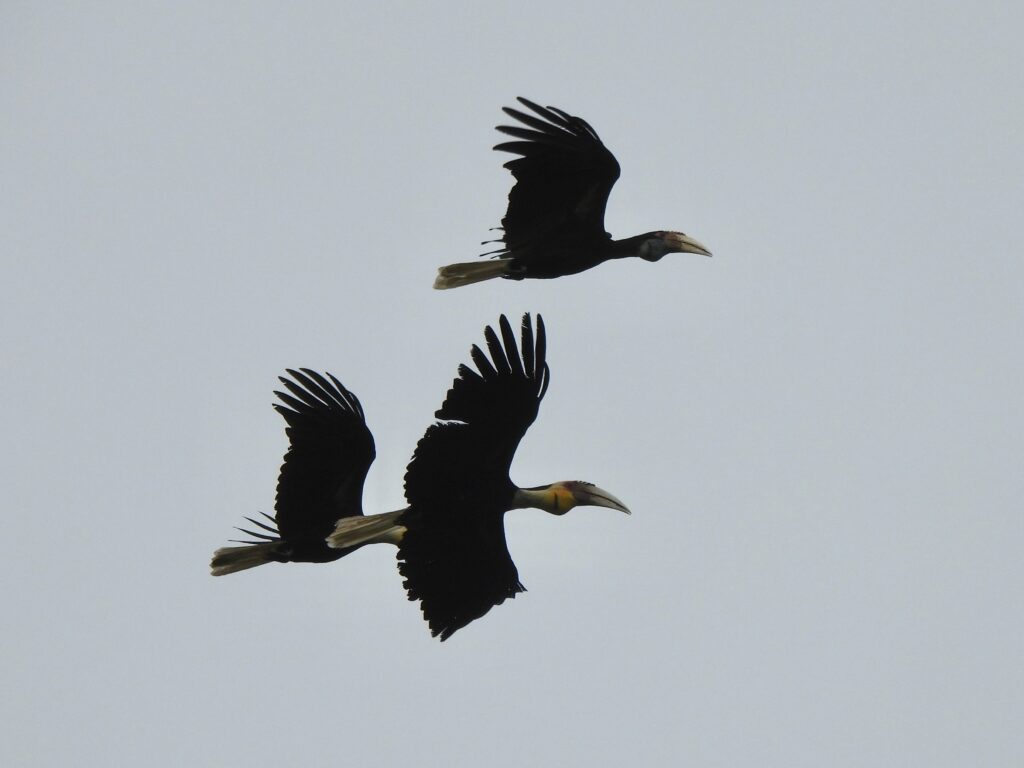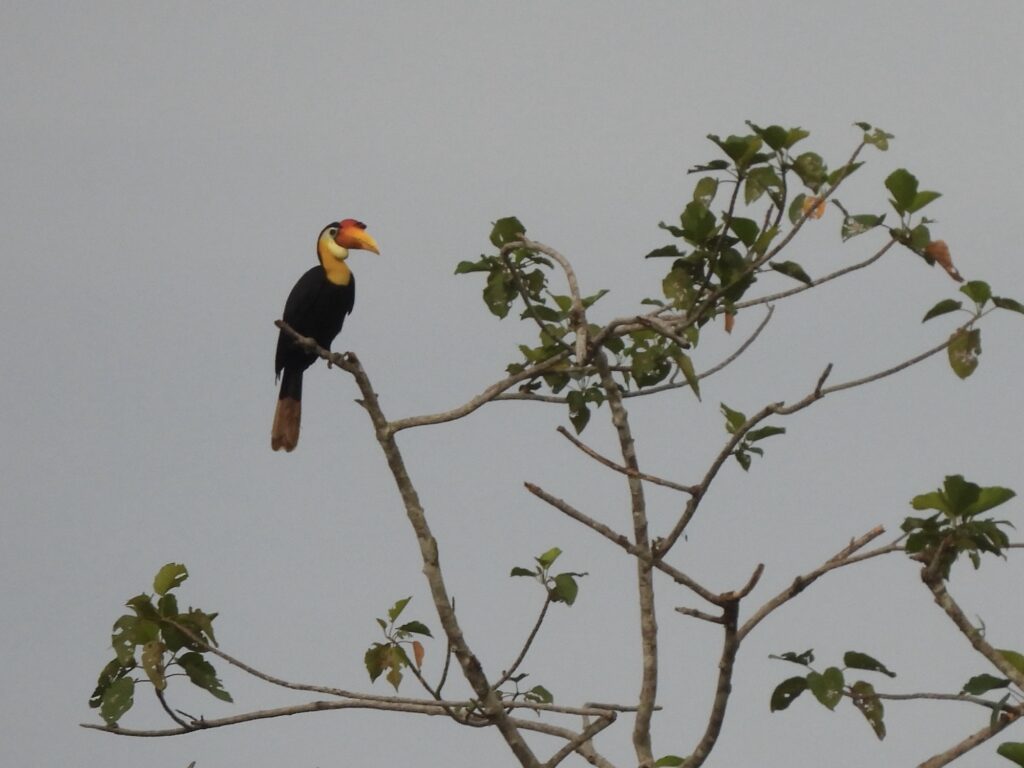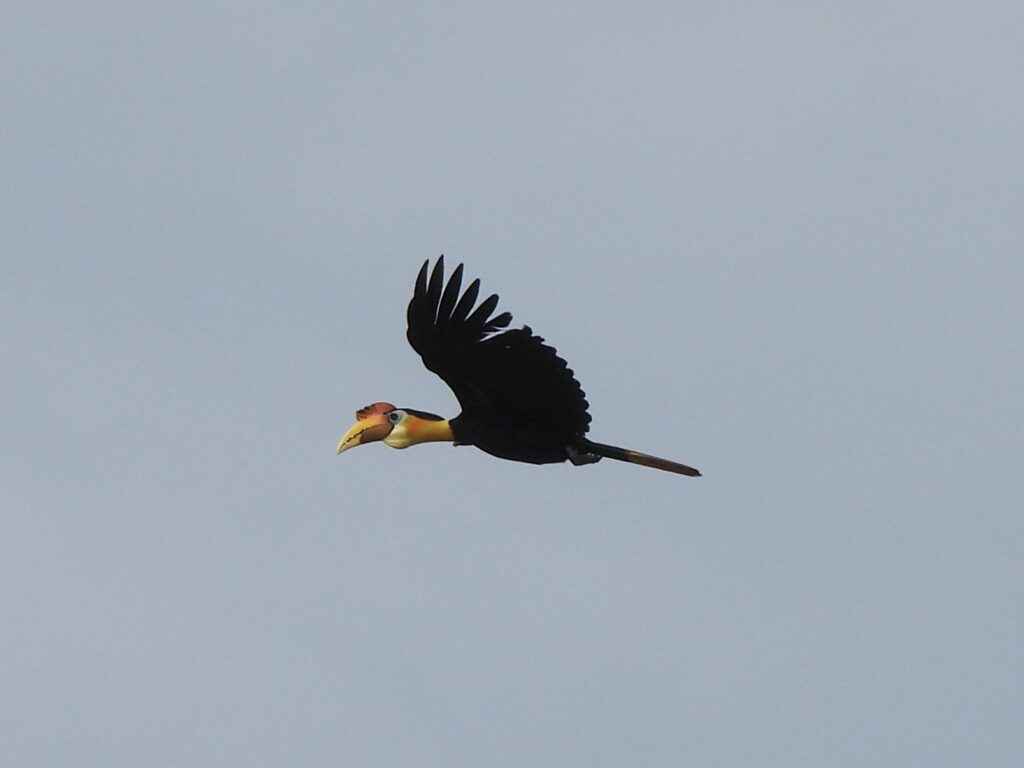The hornbills (family Bucerotidae) are a family of birds belonging to the order Bucerotiformes, distributed across the tropical regions the Old World. These birds are generally monogamous and occur in forests, where most species nest in holes which they seal with mud to avoid predation, only to be opened once the fledglings are old enough. Their large beak is supported by the first and second neck vertebrae being fused, a unique feature among birds. They feed on small animals and fruits and generally show bright plumages.
The family comprises 63 species in 16 genera. The most basal clade, genus Bucorvus (2 species), includes large ground-dwelling birds of Subsaharan Africa savanna and used to be considered a family of their own (the ground-hornbills, family Bucorvidae). There are two other main clades: the first clade is mostly restricted to Afrotropical woodlands, comprising genera Lophoceros (8 species), Tockus (10 species), Horizocerus (3 species), Ceratogymna (2 species) and Bycanistes (6 species), except for the Indomalayan genus Berenicornis (1 species); the second clade is all distributed in Indomalayan forests east to the Solomon Islands, and includes genera Rhinoplax (1 species), Buceros (3 species), Anorrhinus (3 species), Ocyceros (3 species), Anthracoceros (5 species), Aceros (1 species), Rhyticeros (6 species), Rhabdotorrhinus (4 species) and Penelopides (5 species).
Von der Decken’s hornbills
Tockus deckeni
Found in dry savanna of east Africa from Ethiopia to Tanzania. Males of the species show a red bill with a paler tip whereas females have all black bills. I have seen this species in Kenya.
Northern red-billed hornbill
Tockus erythrorhynchus
Inhabitant of open woodland and savanna south of Sahel and along east Africa. Can become quite inquisitive and forage at campsites. I have seen this species in Kenya.
Helmeted hornbill
Rhinoplax vigil
Found in few lowland rainforests of the Malay Peninsula, Borneo and Sumatra. Almost mythical, with a prehistoric look and a maniacal call. Now very close to extinction due to centuries of poaching for the ivory-like material of their casque. I have been lucky to see this species in Borneo.
Rhinoceros hornbill
Buceros rhinoceros
Present in old-growth lowland rainforests of the Malay Peninsula, Borneo and Sumatra. The size and shape of the large, bright-colored casque determines the sex of individuals. I have observed this species in Borneo.
Great hornbill
Buceros bicornis
Distributed throughout Southeast Asia east to the Himalayas (with a disjunct population in the Western Ghats) and south to Sumatra. This charismatic, large species is classified as vulnerable. I have encountered this species in Thailand.
Bushy-crested hornbill
Anorrhinus galeritus
Found in lowland moist forests of the Malay Peninsula, Sumatra and Borneo. Within its range, it is one of the smallest and most social hornbills, often foraging in groups. I have seen this species in Borneo.
Indian gray hornbill
Ocyceros birostris
Endemic to the Indian Subcontinent, where it lives in open woodlands and gardens, often in urban areas provided that there are large fruiting trees. I have observed this species in a city garden in India.
Malabar gray hornbill
Ocyceros griseus
Endemic to the Western Ghats, where it occurs in mid-elevation evergreen forests including tree crops. Their maniacal calls are a familiar sound for locals within their range. I have seen this species in India.
Black hornbill
Anthracoceros malayanus
Inhabitant of lowland forests of the Malay Peninsula, Borneo and Sumatra, and vulnerable due to deforestation. Males can either sport a bright white eyebrow or be full black. I have seen this species in Borneo.
Malabar pied hornbill
Anthracoceros coronatus
Endemic to south India and Sri Lanka. As typical in the genus, plumage is mostly black with white belly, face bare skin, bill and casque, and often travels in pairs through woodlands. I have encountered this species in India.
Oriental pied hornbill
Anthracoceros albirostris
Found in woodlands from the sub-Himalayas in India throughout southeast Asia to Borneo, Java and Sumatra. Sometimes common in urban green areas. I have seen this species in Singapore, Borneo, Vietnam and Thailand.
Wreathed hornbill
Rhyticeros undulatus
Inhabitant of sparse montane forest from the eastern Himalayas south to the Malay Peninsula, Borneo, Java and Sumatra. Their large wings make a loud thrumming sound. I have observed this species in Borneo and Thailand.
Wrinkled hornbill
Rhabdotorrhinus corrugatus
Patchily distributed along lowland tropical rainforests of the Malay Peninsula, Borneo and Sumatra. Endangered due to heavy deforestation. I have seen this species in Borneo.

